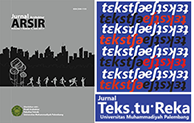Pengaruh Desain Pada Kesakralan Masjid
Sari
The Mosque is considered as the House of Almighty, Allah SWT, and also a place of worship for Muslims; doing salat, pray, reciting Quran, etc. When doing salat or praying, Muslims need to focus and concentrate, therefore they need a serene atmosphere that can support to focus and concentrate when they are doing the salat or praying and other activities. This condition can happen if the mosque produces a sacred atmosphere.
Understanding the meaning of the sacred can vary in each individual. Each individual has her/his way to understand the meaning of sacredness. These differences emerge because of many factors which can influence the meaning of sacredness in a mosque. Therefore this study wants to find out what factors can influence the sacredness of a mosque and whether mosque design is one of the factors which have greatly influenced the sacredness of a mosque
The research method is a qualitative method using grounded theory. The results of the study stated that the design was the most chosen factor by respondents as a factor influencing the sacredness of the mosque
Kata Kunci
Teks Lengkap:
PDF (English)Referensi
Adnan, S. A. (2020). Mengenal Warna-Warna Kesukaan Nabi Muhammad SAW. Oase 29 Februari 2020
Dijk, K. V. (2009). Perubahan Kontur Masjid. In P. J. Nas, Masa lalu dalam Masa Kini Arsitektur di Indonesia (p. 49). Jakarta : PT.Gramedia Pustaka Utama.
Estika, N. D., Feni, K., Kusuma, H. E., & Widyawan, F. (2017). Makna Kesakralan Gereja Katolik. Jurnal Lingkungan Binaan Indonesia 6 (3), 195-202.
Fanani, A. (2009). Arsitektur Masjid. Jakarta: Bentang Pustaka.
Haris, T. (2010.). Masjid-Masjid di Dunia Melayu Nusantara. Jurnal Suhuf, Vol 3.No.2.
Iskandar, M. B. (2004). Tradisionalitas dan Modernitas Tipologi Arsitektur Masjid. Dimensi Vol 32 No 2, 110-118.
Iskandar, M. B. (2008). Perkembangan Arsitektur Masjid: Suatu Transformasi Bentuk dan Ruang. Jurnal Historia Vol IX,No 2.
Putrie, E. Y., & Hosiah, A. (2012). Keindahan dan Ornamentasi dalam Perspektif Arsitektur Islam. Journal Of Islamic Architecture Vol 2,No 1, 46.
Rapoport, A. (1982). The Meaning of The Built Environment: A Nonverbal Communication Approach. Berverly Hill, USA: Sage Publication.
Salura, P., BAchtiar, F., & Trisno, R. (2015). Relasi Liturgi Dengan Ekspresi Bentuk Skarla Arsitektur Gereja KAtolik. LPPM Universitas Katolik Parahyangan Bandung.
Savitri, M. A. (2007). Peran Pencahayaan Buatan dalam Pembentukan Suasana dan Citra Ruang Komersial Studi kasus pada Interior Beberapa Restoran Tematik di Bandung). Bandung: Jurnal Ambience 1 (1).
Syafi'i, A. G. (2017). Warna Dalam Islam. Jurnal An-Nida' Vol 41 No 1, 62.
Taib, M. (2012). Islamic Architecture Evolution : Perception and Behaviour. Procedia Social and Behavioral Sciences, Elsevier Ltd.
Wibowo, H., & Natalia, T. W. (2017). Persepsi Masyarakat terhadap Nilai Sakral dari Alun-Alun Bandung. Seminar Ikatan Peneliti Lingkungan Binaan Indonesia (IPLBI) 1.
Wicaksono, A. A., & Tisnawati, E. (2014). Teori Interior. Jakarta: Griya Kreasi.
Wuisman, J., & Nas, P. (2009). Masa Lalu dalam Masa Kini Arsitektur di Indonesia. Jakarta: Gramedia.
DOI: https://doi.org/10.32502/arsir.v4i2.2482
Refbacks
- Saat ini tidak ada refbacks.
Indexed by:

Arsir : Jurnal Arsitektur is lisenced under a Creative Commons Attribution-ShareAlike 4.0 International License.









